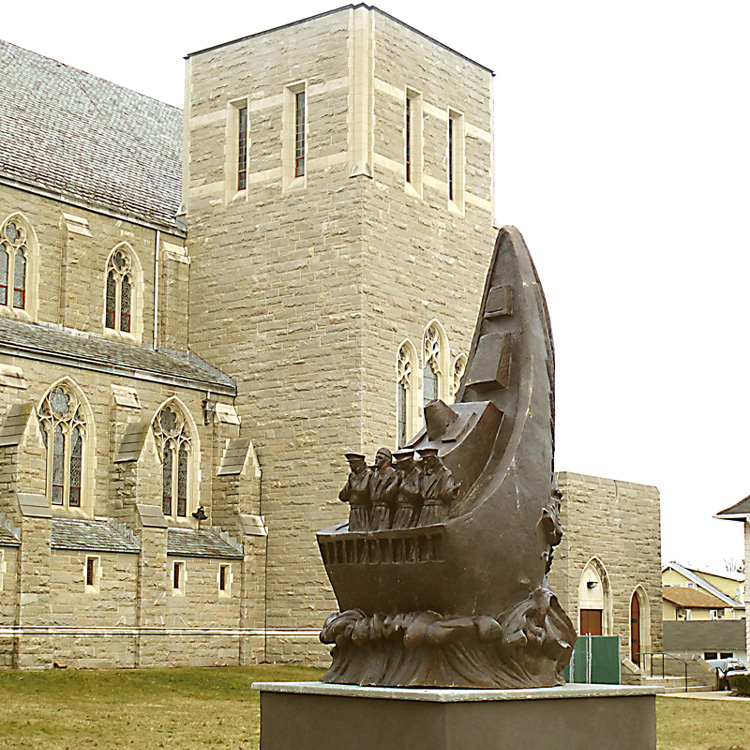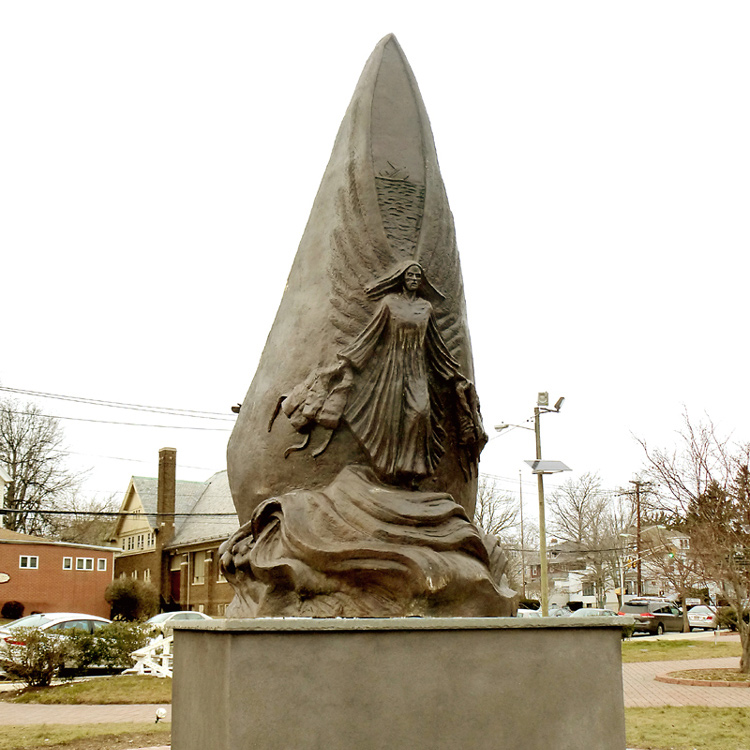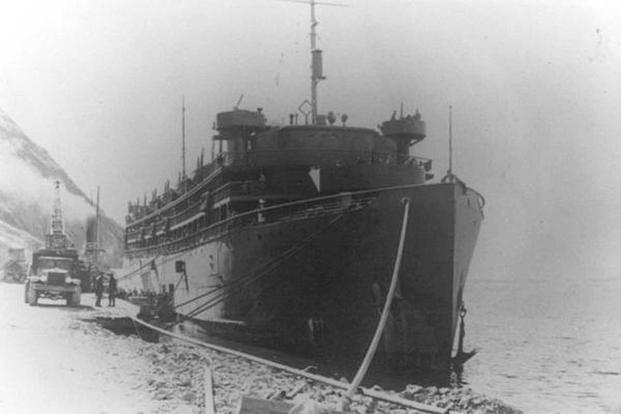Honoring heroism in World War II


These notes about the Four Chaplains monument are based on my online research. The photos above are from St. Stephen’s Roman Catholic Church in Kearney, New Jersey. Monument of The Four Chaplains – St. Stephens Church – Kearny, NJ (ststephenkearny.com)
The monument is based on a deadly incident in World War II. The Chaplains were traveling with hundreds of others on the U.S. Army Transport ship (USAT) Dorchester (pictured below). Representing different faiths, the Chaplains worked together as a team to minister to the passengers. The ship was part of a North Atlantic convoy heading from New York to Europe.

German submarines actively hunted for ships carrying supplies to Europe. The convoy the Dorchester participated in was no different. The ship was torpedoed off the coast of Greenland on February 3, 1943 after a German U-boat spotted the convoy.
As the Dorchester began to sink, the Chaplains helped to hand out lifejackets. Each Chaplain gave his personal lifejacket to a fellow passenger. The Chaplains continued to help others, knowing that they would not survive.
In this article from military.com, there are several eyewitness accounts of the bravery of the Chaplains as the ship went down: Four Chaplains Day | Military.com
The Chaplains’ names
Lt. George L. Fox (Methodist)
Lt. Alexander D. Goode (Jewish/Rabbi)
Lt. Clark V. Poling (Reformed Church)
Lt. John P. Washington (Roman Catholic)
Four Chaplains Monuments and Memorials
The Chaplains’ bodies were not recovered, so there are no graves.
The link below is to a Wikipedia article about them, including various memorial foundations and plaques/monuments in their memory:
About the author – Cultures and Graves